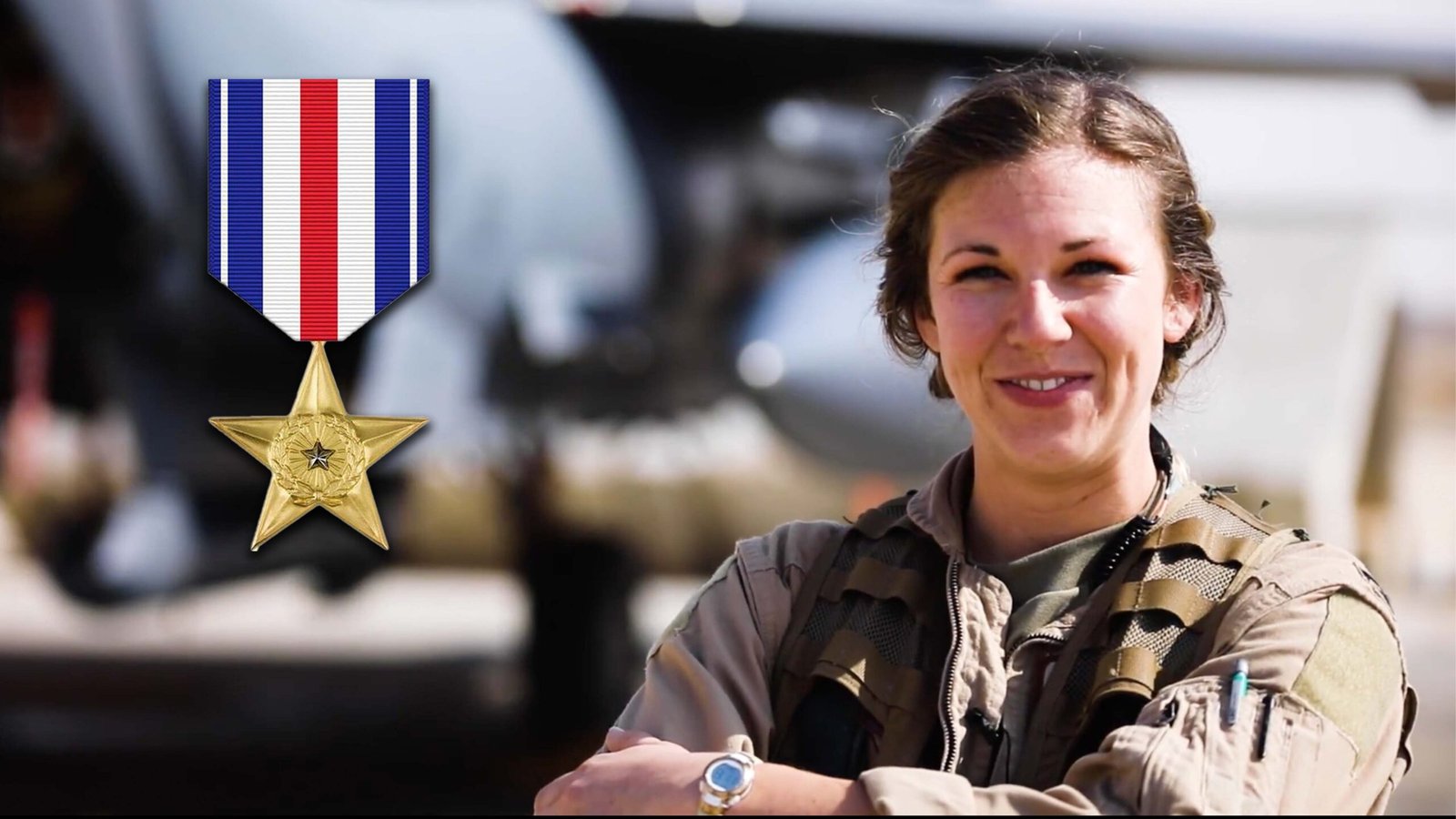On Nov. 12, 30 fighter pilots and airmen were recognized for missions during the largest air-to-air enemy engagement in over 50 years, according to the Air Force. The crew of one F-15E, pilot Maj. Benjamin Coffey and Fweapon systems officer Capt. Lacie Hester were awarded the nation’s third-highest valor award, the Silver Star.
With that award, Hester is the first woman in the Air Force to receive the Silver Star and the 10th woman in the Department of Defense’s history. Together, the Air Force said Coffey and Hester shot down 70 drones and three ballistic missiles.
“It takes a high-performing team with high-performing individuals to be able to find these things to begin with and then to engage it,” Coffey said in a press release..
The missions came during a massive aerial attack of missiles and unmanned drones fired from Iran from the morning of April 13 into the early hours of April 14. In total, 66 airmen from the 494th Fighter Squadron and 494th Fighter Generation Squadron worked together to repel the massive aerial attack on Israel.
Subscribe to Task & Purpose today. Get the latest military news and culture in your inbox daily.
During the ceremony, 28 other airmen involved in the defensive operation were awarded six Distinguished Flying Crosses with the valor device, four Distinguished Flying Crosses with the combat device, four Distinguished Flying Crosses, two Bronze Stars, seven Air and Space Commendation Medals, and seven Air and Space Achievement Medals.
Air Force photo by Senior Airman Olivia Gibson
During the fight, Coffey and Hester depleted their air-to-air missiles and rockets. Instead of returning to their base, they engaged targets with the F-15’s gatling gun, shooting down several one-way attack drones at extremely low altitudes.
“Although intelligence provided the numbers of how many drones we could expect to see, it was still surprising to see them all,” Hester told the Air Force.
Coffey and Hester also overcame a serious malfunction from one of their missiles. During the fight, a missile the plane launched failed to detach from the wing of their F-15, a ‘hung missile.’ That forced the team to land with a potentially armed missile attached to their wing.
As they approached the landing strip, the base entered alarm red status, meaning the base was locking down due to an incoming attack and debris falling around it from destroyed drones and missiles. Despite being told to seek shelter in bunkers, support crews remained exposed to keep all the jets in the fight, refueling and rearming the jets.
“Really, all we could tell them was stay airborne as long as you can, with the gas that you have,” F-15 pilot Maj. Clayton Wicks told CNN. Wicks who controlled jet operations on the ground during the attack. “Don’t divert, because even our divert airfields — we don’t know what’s going on there either, so if stuff is blowing up over our heads, very likely stuff is blowing up there too.”
The Air Force estimates that Iran’s attack included over 300 one-way attack drones and missiles. Between allied aircraft and base defenses, 99% of the attack was prevented from reaching Israel.

